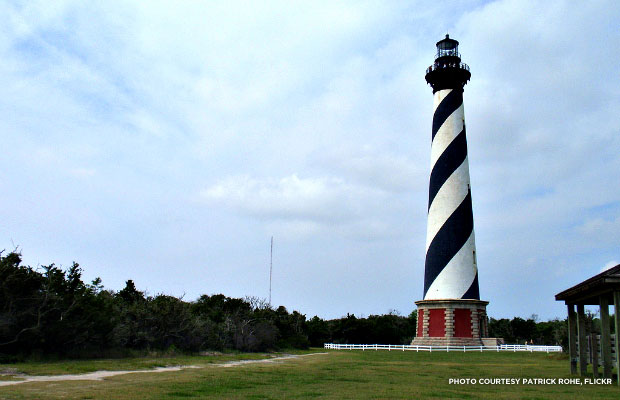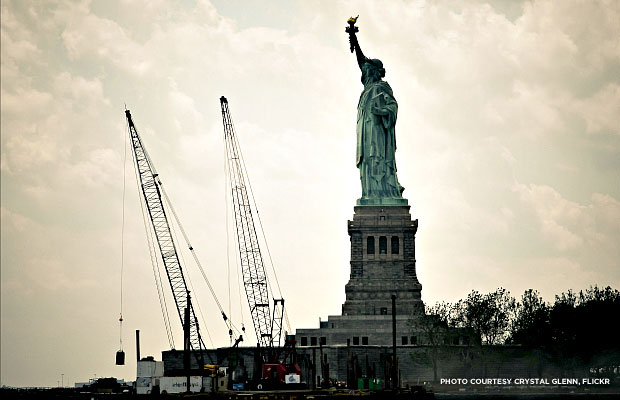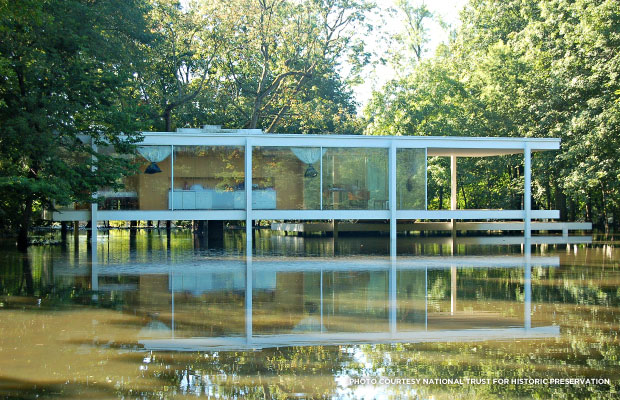In Deep Water: Three Ways to Save Historic Places from Climate Threats

The National Park Service had to move Cape Hatteras Lighthouse inland to prevent it from being lost at sea.
Increasingly intense and frequent weather events -- from flooding in the South and East to persistent drought across the West -- pose a real and severe threat to historic resources across a landscape as diverse as the United States itself. The good news: In spite of the magnitude and scale of the issue, people across the country are taking action and making an impact -- and you can, too.
Last month, a report released by the Union of Concerned Scientists identified a staggering array of heritage sites and cultural resources that are currently threatened or compromised. The urgency and magnitude of the problem raise important questions for us in preservation:
- What responsibility do we preservationists have in the face of threats from natural disasters?
- If we do hold ourselves responsible for finding solutions, what can we individually do about a challenge that seems so big?
If you want to make a difference and protect places that might otherwise be lost forever, consider being part of one of these concrete solutions:
Address the worst case scenario head on.

Hurricane Isabel was the costliest and strongest hurricane in the 2003 Atlantic hurricane season, partially wiping out Hatteras Island, N.C.
The best way to deal with a worst case scenario is with a solid plan. In Annapolis, Maryland, a small and impassioned group of people is making a real difference in how the city will respond to their worst case scenario -- storm surge and river flooding that could inundate this historic city. A broad base of stakeholders, including preservationists, is creating an amendment to the City’s formerly adopted Natural Hazard Mitigation Plan using FEMA’s "How-To" Guide #6 (FEMA 386-6), Integrating Historic Property and Cultural Resource Considerations Into Hazard Mitigation Planning (PDF).
Since Annapolis and its historic downtown depend on a significant amount of heritage tourism which might be lost or interrupted in the event of a major flooding event, such as when the city was hit by Hurricane Isabel in 2003, this amendment is a way for preservationists to simultaneously protect historic resources and reinforce the economic resiliency of the city in the event of a disaster. All municipalities that wish to qualify for FEMA funds must have a current hazard mitigation plan in place, and this amendment process makes sure that historic preservation strategies are considered when protecting or rebuilding the city from major natural disasters.
Play strong defense.

Cranes seen repairing the Statue of Liberty, a National Historic Landmark, after the devastating effects of Hurricane Sandy in 2012. Sea levels surrounding New York City have increased by 12 inches over the last 100 years.
To erect a strong defensive line, you can fortify historic places against climate threats by supporting solutions such as New York City’s recently adopted building code designed to protect people, property, and places against the next storm like Hurricane Sandy.
Of all the buildings determined by the building department to be unsafe or uninhabitable after Sandy, 89% were one- and two-story wood-framed buildings constructed before 1961, showing the great vulnerability of historic homes and small commercial buildings to severe storm events. To strengthen the resiliency of the city and its older buildings in the future, the new code requires strategies such as creating flood-resistant first-floor construction or raising first floors above the mean flood elevation.
While many of the solutions provided in New York’s new code might on the surface seem at odds with historic preservation, doing nothing might be worse if precious resources are lost forever. Consider this: Is it better to win the battle and lose the war, or should we as a movement adapt to the changes around us to protect the long-term resiliency of what we care about from persistent threats?
When all else fails, get out of harm's way.

Farnsworth House, built in 1951 and a National Trust site, sits near the bank of the Fox River, in Plano, Ill.
Accommodating persistent threats or high risks of loss might mean either permanently or temporarily moving some resources. While relocation or elevation is usually not a preferred preservation option, sometimes it could be the best option to protect against imminent or recurring damage. At the National Trust for Historic Preservation, we are confronting this decision-making challenge within our own portfolio of historic sites.
The Farnsworth House, built by Ludwig Mies van der Rohe in 1951 and located near Plano, Illinois, is a much beloved Modernist masterpiece. Due to increased urbanization, storm water runoff, and rising water levels in the nearby Fox River, Farnsworth House has been inundated by flooding repeatedly since it was built, threatening the integrity of the house and its unique character.
In response, the National Trust for Historic Preservation has convened a panel of experts to investigate solutions to this recurring and pressing threat to the site. The flood mitigation project's website details three possible alternatives for protecting the house: raise the house in situ, relocate the house, or hydraulically lift the house.

An increasing number of floods poses serious threats to the future of the historic Farnsworth House.
The advisory panel found the hydraulic lift to be the most promising choice, as it preserves the building’s relationship to the site. However, other options being considered include raising the building in situ or relocating it to a different location on the site. A final decision is pending consideration of the cost and technical feasibility of the different options. Regardless of the option chosen, the Farnsworth House experience is helping us to see that we need to take action now, or we risk losing a place treasured by many.
No matter where you chose to start -- from taking small steps to getting involved with a larger plan -- your actions are an important and necessary step to protect the history and the place you care about. All those who follow you will benefit from your efforts.


